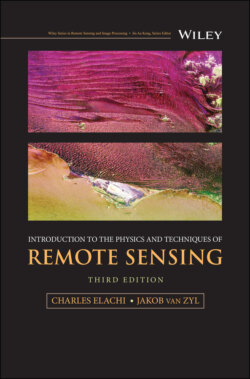Читать книгу Introduction to the Physics and Techniques of Remote Sensing - Jakob J. van Zyl - Страница 24
2.1.6 Coherency
ОглавлениеIn the case of a monochromatic wave of certain frequency ν0, the instantaneous field at any point P is well defined. If the wave consists of a large number of monochromatic waves with frequencies over a bandwidth ranging from ν0 to ν0 + Δν, then the random addition of all the component waves will lead to irregular fluctuations of the resultant field.
The coherency time Δt is defined as the period over which there is strong correlation of the field amplitude. More specifically, it is the time after which two waves at ν and ν + Δν are out of phase by one cycle; that is, it is given by:
(2.18)
The coherence length is defined as
(2.19)
Two waves or two sources are said to be coherent with each other if there is a systematic relationship between their instantaneous amplitudes. The amplitude of the resultant field varies between the sum and the difference of the two amplitudes. If the two waves are incoherent, then the power of the resultant wave is equal to the sum of the power of the two constituent waves. Mathematically, let E1(t) and E2(t) be the two component fields at a certain location. Then the total field is
(2.20)
The average power is
(2.21)
If the two waves are incoherent relative to each other, then and P = P1 + P2. If the waves are coherent, then . In the latter case, we have:
This is the case of optical interference fringes generated by two overlapping coherent optical beams. The bright bands correspond to where the energy is above the mean and the dark bands correspond to where the energy is below the mean.
